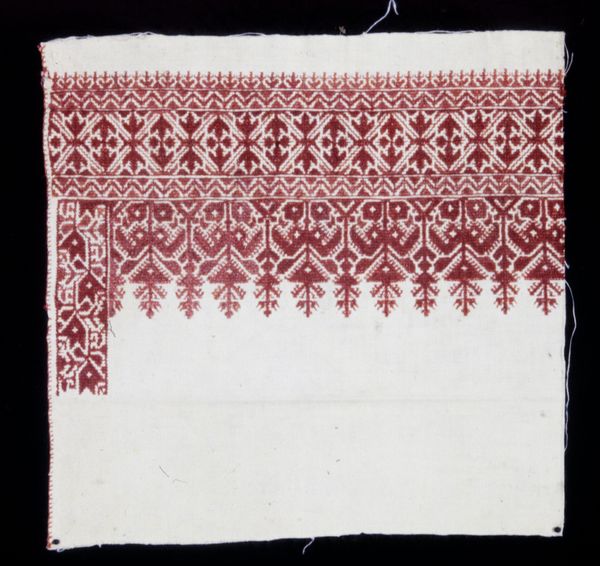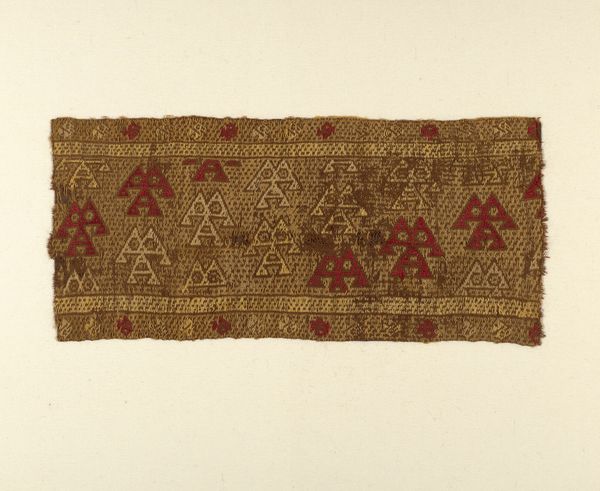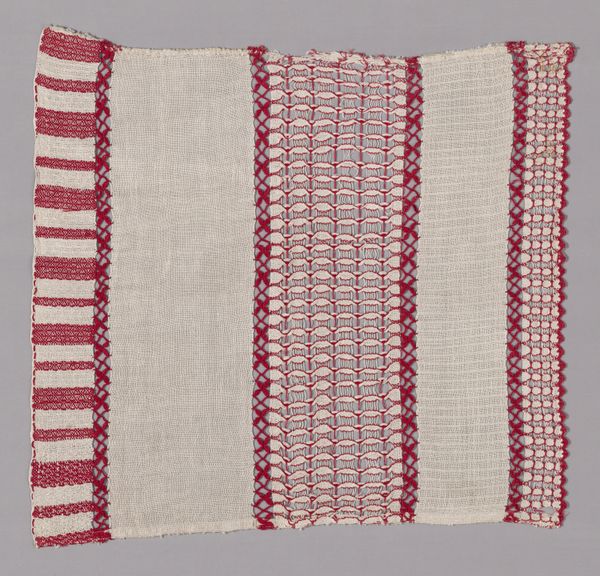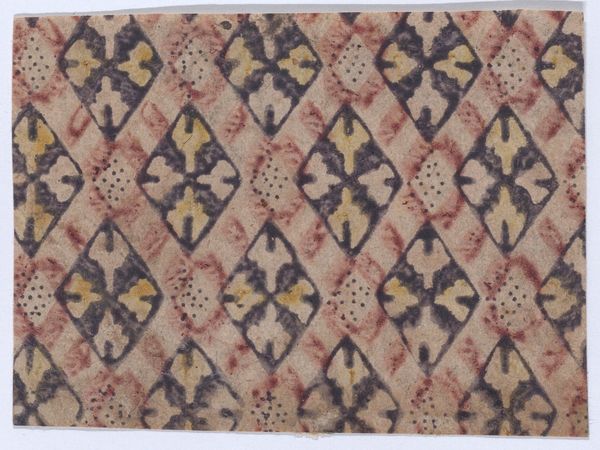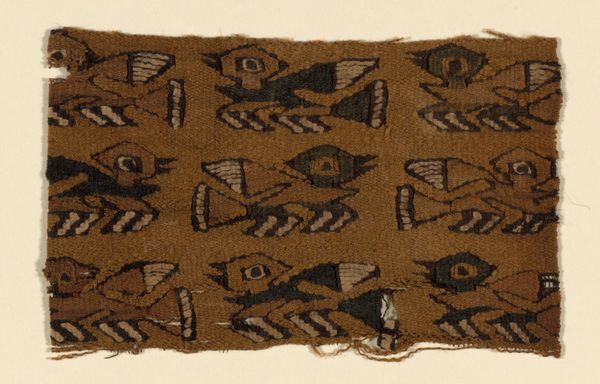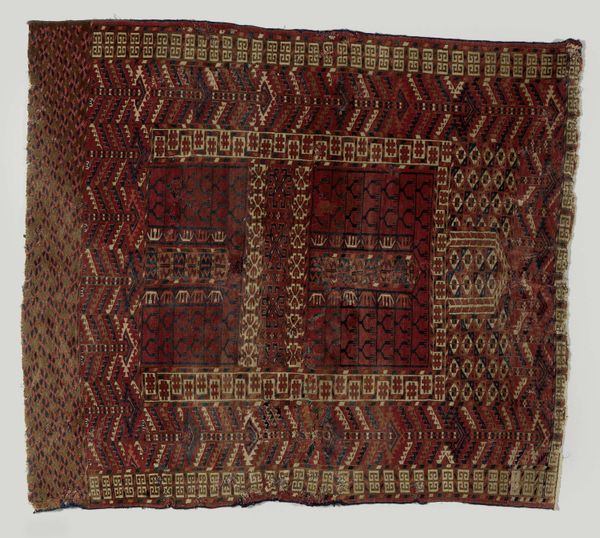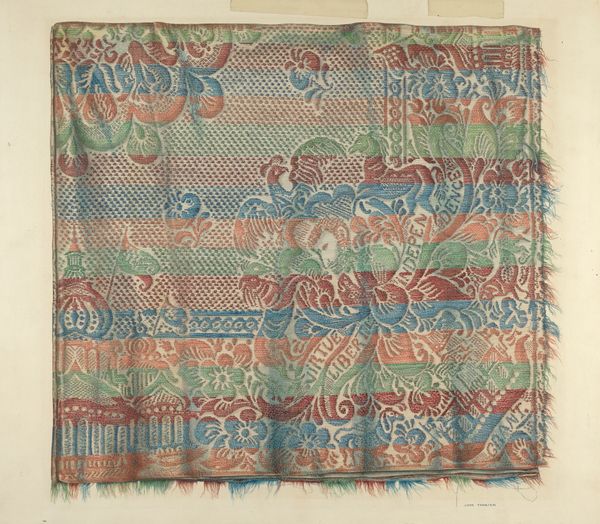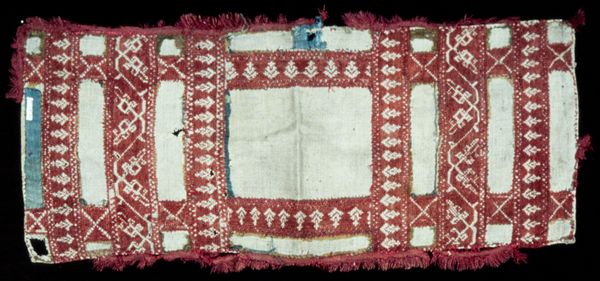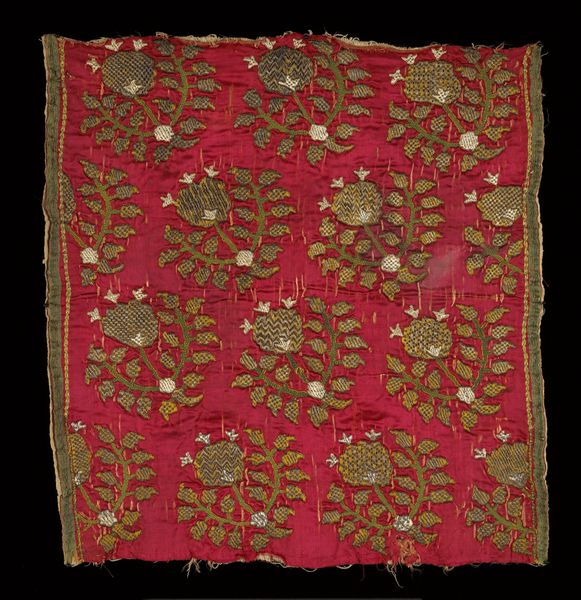
Fragment Ayyubid period (1171–1250)/Mamluk period (1250–1517), 13th/14th century
0:00
0:00
weaving, textile
#
pattern
#
weaving
#
textile
#
figuration
#
text
#
islamic-art
#
textile design
#
watercolor
Dimensions: 9.7 × 10.2 cm (3 7/8 × 4 in.)
Copyright: Public Domain
This fragment presents us with rows of stylized floral or geometric patterns meticulously dyed on woven linen. The lozenge motif evokes the cyclical nature of life. It appears in ancient art forms across cultures, from the stepped lozenges on the walls of the ziggurats of Mesopotamia to the geometric patterns found on Neolithic Chinese pottery. The presence of the lozenge here resonates deeply with the psychological need for connection and continuity. It brings to mind symbols of fertility and growth, much like the mandorla used in Christian iconography, or the ovoid patterns found in Paleolithic cave paintings, suggesting a shared subconscious understanding of life's mysteries. These images are not merely decorative; they are powerful forces that engage viewers on a deep, subconscious level. The persistence of these symbols reveals the non-linear, cyclical progression of cultural memory, resurfacing, evolving, and taking on new meanings in different historical contexts.
Comments
No comments
Be the first to comment and join the conversation on the ultimate creative platform.
